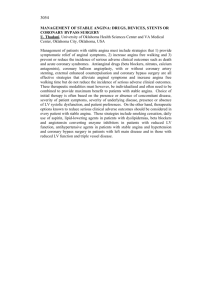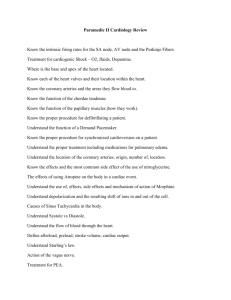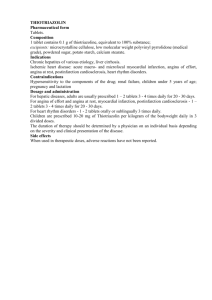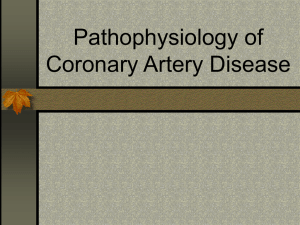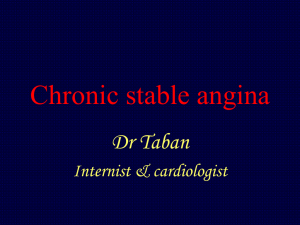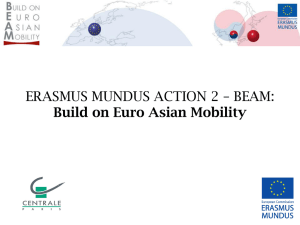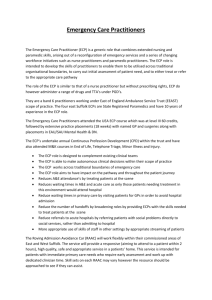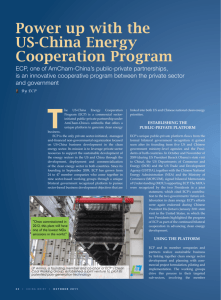External Counter Pulsation (ECP) Therapy
advertisement
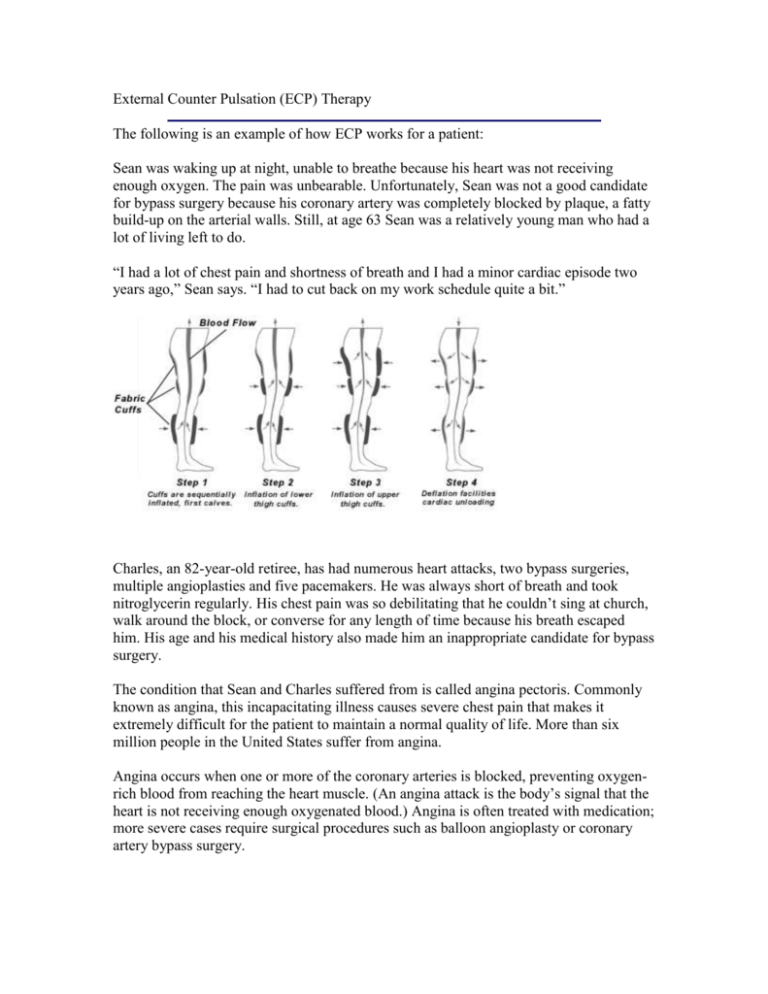
External Counter Pulsation (ECP) Therapy The following is an example of how ECP works for a patient: Sean was waking up at night, unable to breathe because his heart was not receiving enough oxygen. The pain was unbearable. Unfortunately, Sean was not a good candidate for bypass surgery because his coronary artery was completely blocked by plaque, a fatty build-up on the arterial walls. Still, at age 63 Sean was a relatively young man who had a lot of living left to do. “I had a lot of chest pain and shortness of breath and I had a minor cardiac episode two years ago,” Sean says. “I had to cut back on my work schedule quite a bit.” Charles, an 82-year-old retiree, has had numerous heart attacks, two bypass surgeries, multiple angioplasties and five pacemakers. He was always short of breath and took nitroglycerin regularly. His chest pain was so debilitating that he couldn’t sing at church, walk around the block, or converse for any length of time because his breath escaped him. His age and his medical history also made him an inappropriate candidate for bypass surgery. The condition that Sean and Charles suffered from is called angina pectoris. Commonly known as angina, this incapacitating illness causes severe chest pain that makes it extremely difficult for the patient to maintain a normal quality of life. More than six million people in the United States suffer from angina. Angina occurs when one or more of the coronary arteries is blocked, preventing oxygenrich blood from reaching the heart muscle. (An angina attack is the body’s signal that the heart is not receiving enough oxygenated blood.) Angina is often treated with medication; more severe cases require surgical procedures such as balloon angioplasty or coronary artery bypass surgery. A Non-Invasive Alternative A new treatment is available called External CounterPulsation (ECP). It restores oxygenated blood flow to the heart by opening new pathways to bypass blocked arteries. ECP is non-invasive, painless, and effective at treating chronic (stable) angina. In fact, studies show that 78% of angina patients treated with ECP experience relief from angina pain, fewer angina attacks, improvement in the oxygen-deprived areas of the heart, and an enhanced quality of life. Dennis and Carlyle both received ECP therapy at South Miami Hospital and the treatment was very successful for both men. Dennis was able to stop almost all of his medication, his blood pressure dropped 20 points, his shortness of breath disappeared and he was able to return to work. Carlyle feels like a new man. He can now sing at church, complete his conversations and walk around the block. How It Works ECP uses sequential compression of the patient’s lower extremities to stimulate the formation of blood vessels in the heart. The patient lies down and inflatable fabric cuffs are fastened around the patient’s calves, thighs and buttocks. Then the cuffs are sequentially inflated — first calves, then thighs and buttocks — at the precise moment the heart is resting between beats (diastole). When the cuffs are compressed during diastole, blood is forced to the heart from the legs and buttocks. This reduces the heart’s workload and increases the flow of blood through the coronary arteries to the heart muscle. When the heart muscle receives enough oxygenated blood, angina pain is relieved. ECP therapy is painless. In fact, many patients report that it feels like a vigorous massage. No anesthesia is required. “Nature’s Bypass” Researchers believe repetitive ECP treatments for one hour per day over 35 days (five one-hour sessions per week for seven weeks) release naturally occurring growth factors, causing new blood channels to form around the blockages in the patient’s arteries. It’s a theory called “nature’s bypass.” ECP May Be Right For You ECP therapy is now available at the South Miami Hospital. Ask your physician to evaluate your condition to determine if you are an appropriate candidate.
